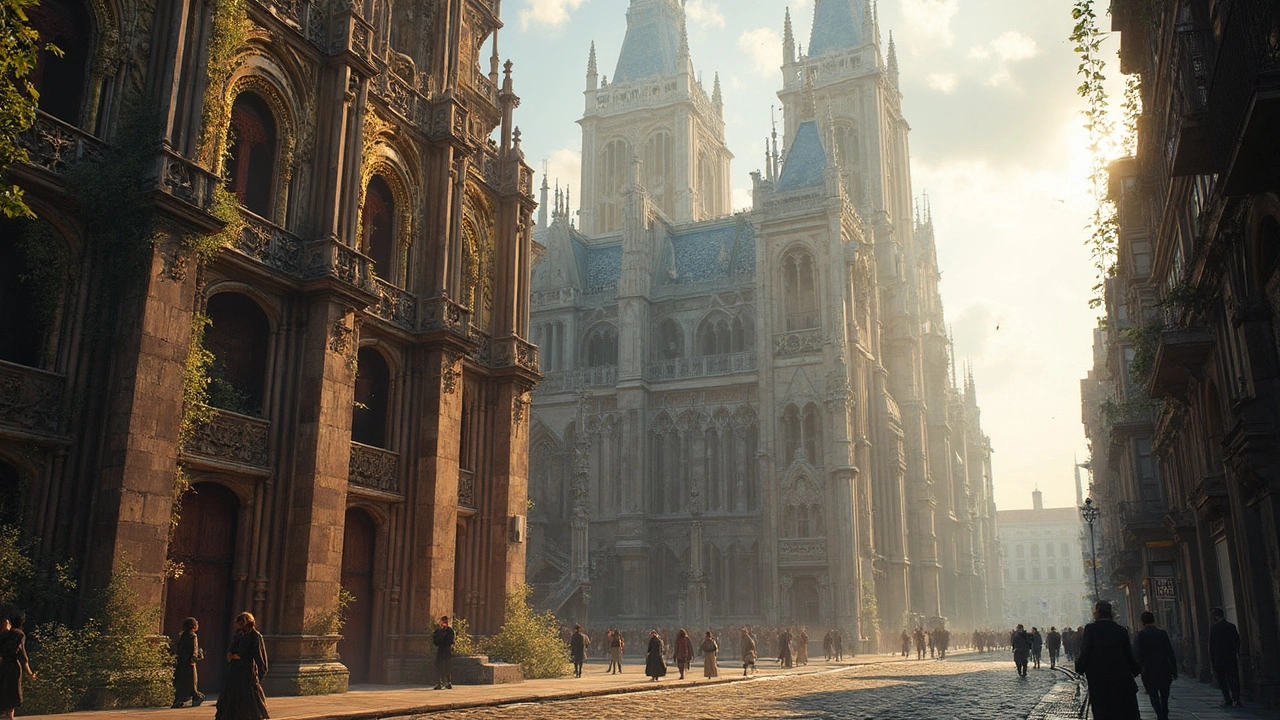Art and Religion: How Sacred Belief Shapes Buildings, Images, and Rituals
Art and religion are inseparable—look at a cathedral’s stained glass or a mosque’s tilework and you’re seeing belief turned into craft. Sacred art isn’t decoration; it teaches, guides movement, and frames worship. Want to read religious buildings and images like a local? Start with three practical moves: know the story, watch the light, and feel the layout.
Three practical moves
Know the story. Most sacred art tells a narrative: saints, prophets, or scenes from holy texts. A Byzantine mosaic in Hagia Sophia, for example, uses color and placement to show hierarchy—Christ at the center, rulers near the edges. Learning the basic stories helps you spot symbols: a lamb often means sacrifice, a key can stand for Saint Peter, and a lotus hints at renewal in Eastern faiths.
Watch the light. Architects and artists design light to shape experience. Gothic cathedrals use tall windows and pointed arches so sunlight paints floors and frescoes. In many mosques, filtered light off tiles calms the eye and focuses attention on prayer. When you visit, pause where the light falls—artists placed their best scenes there.
Feel the layout. Rooms, altars, domes, and aisles move people through a ritual. A Romanesque church’s thick walls and rounded arches create a grounded, protective feel; a Baroque nave lifts and dazzles you with ornament, pushing toward an emotional climax. Noticing where people stand or sit reveals the art’s purpose—procession routes, focal points, and places for silent reflection.
Simple ways to learn and respect sites
How to look without offending? Respect rules. Many sacred sites ask visitors to dress modestly, remove shoes, or avoid photos near active worship. Watch for signs, ask guards, or check the site’s website before you go. A quiet voice and steady steps usually do more for understanding than a running commentary.
Preservation matters. Religious art faces humidity, crowds, and political change. Efforts to preserve mosaics, frescoes, and carved stone combine old craft and modern science. If you care, pick guided tours that support conservation and local communities.
Quick ways to learn more: read a one-page guide about a site before entering, join a short tour, or use an audio guide. Focus on one element—stained glass, a dome, or a relief—and study how it repeats across cultures. You’ll spot patterns faster that way.
Art and religion keep changing. Modern architects borrow sacred forms—domes and arches—while contemporary artists rework icons to ask new questions about faith and identity. That ongoing conversation is exactly why these sites still feel urgent and alive.
Ready to try it? Next time you step into a church, mosque, temple, or shrine, pick a corner, look for three symbols, note how light moves, and ask one simple question: what did this place want me to feel?
If you want deeper reading, pick one style and follow it. Start with Byzantine mosaics and Hagia Sophia, then study Gothic cathedrals and Romanesque churches to compare space, light, and symbols. Visit a museum or take a local tour for context. Keep a small notebook or photos of details (not people) and write one sentence on what each detail means.

Baroque Architecture: Where Art Meets Faith
Baroque architecture is not just about grand buildings but about the spirit of an era where art and religion intertwined. Emerging in the 17th century, it emphasized grandeur, drama, and movement, reflecting the power and glory of the church. This article explores how Baroque architecture changed the landscape of religious buildings and left an enduring mark on art and design. Dive into the ornate details and understand how this style continues to capture imaginations.
Read more